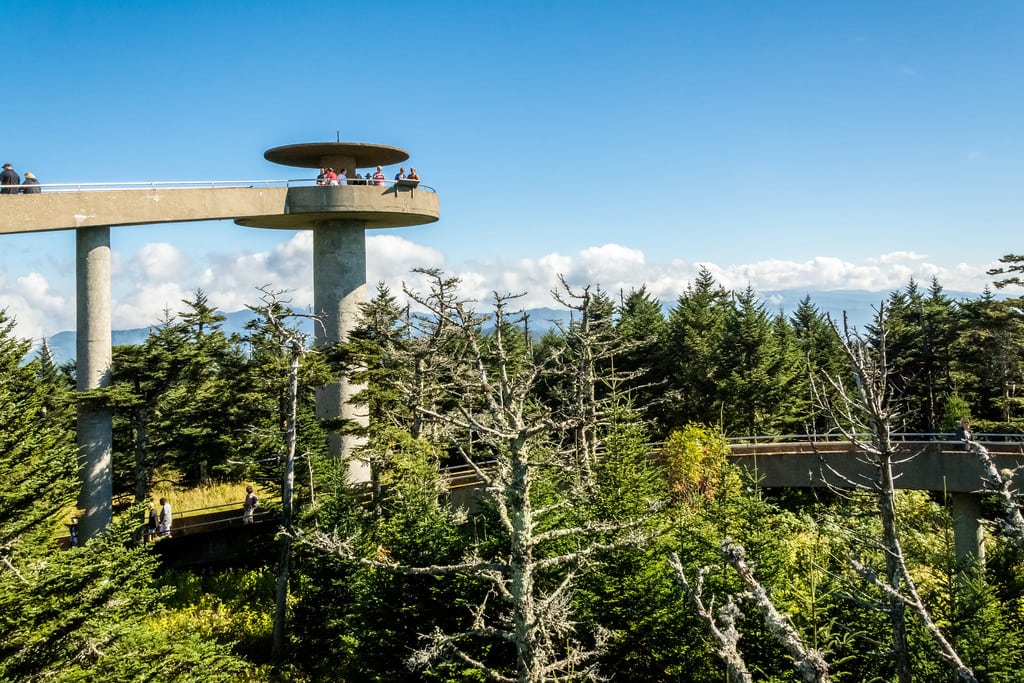Report: UN says significant nature sites are threatened around the world
Skift Take
Despite the growing number of nature reserves, national parks and other protected areas across the globe, half of the world's richest biodiversity zones remain entirely unprotected.
Protected areas are being managed in a more equitable way, with a greater role for indigenous communities. But current investment in protected areas is only around half of what is needed to support endangered species, protect threatened habitats and deliver the full benefits that sustainably-managed protected areas can deliver.
These are among the main findings of a report from the United Nations Environment Programme (UNEP) that tracks progress towards internationally-agreed targets on the world's protected areas.
The report was presented today at the 11th Conference of the Parties to the UN Convention on Biological Diversity (CDB COP 11) in Hyderabad, India. The study received the the official backing of countries at COP 11 this week as a major contribution towards tracking progress on global efforts to increase protected areas.
Two years ago countries set a goal under the CBD that by 2020, at least 17 per cent of the world's terrestrial areas and 10 per cent of marine areas would be equitably managed and conserved.
The Protected Planet Report 2012 says that protected areas have increased in number by almost 60 per cent, and in area by just under 50 per cent, since 1990. But the study states that poor management, under-funding and a lack of critical data on protected areas mean that the world is making insufficient progress towards the 2020 goals.
Produced by UNEP's World Conversation Monitoring Centre (WCMC) in partnership with the International Union for the Conservation of Nature (IUCN), the study is the first in an annual series that will monitor global efforts to support and expand protected areas.
"Protected areas contain some 15 per cent of the world's carbon stock and support the livelihoods of over one billion people, making them a crucial factor in supporting biodiversity, ecosystem services and human livelihoods," said UN Under-Secretary-General and UNEP Executive Director Achim Steiner.
"This new report provides not only the fact and figures required by decision-makers, but outlines ways to overcome fundamental challenges in the management of protected areas. It highlights the key actions required to meet international goals, and to harness the multiple economic and environmental benefits that sustainably managed protected areas can provide," added Mr. Steiner.
Global protected area coverage
According to the most recent figures, just over 12 per cent of the world's terrestrial areas are thought to be protected today.
To meet the CBD target of 17 per cent, an additional 6 million square kilometres of land and inland waters would have to be recognized as protected by world governments - an area more than twice the size of Argentina.
Marine protected areas are lagging even further behind. Around 1.6 per cent of the global ocean area is protected, mostly in near-coastal areas. To meet the CBD target of 10 percent, an additional 8 million square kilometres of marine and coastal areas would need to be recognized as protected - an area just over the size of Australia. However, the UNEP study states that the number of very large marine protected areas (MPAs) has grown significantly in recent years. Today, there are over 13 MPAs each with an area greater than 100,000 square kilometres. Overall, marine protected area coverage has increased by over 150 percent since 2003.
Coverage of biodiversity - are protected areas in the right place?
The UNEP study uses a number of indicators to asses the location of exisiting protected areas. These include 'ecoregions' (large areas with characteristic combinations of species distinct from adjcent areas) and other internationally-recognized biodiversity zones, such as Important Bird Areas.
The study finds that the global protected area network does not yet provide adequate coverage of the world's terrestrial ecoegions. Latest figures show that half of the world's key ecoregions only have 10 per cent of their area protected. A further 10 per cent of global ecoregions have less than 1 per cent of their area protected, suggesting critical gaps in biodiversity protection.
Only 13 percent of the world's marine ecoregions meet the CBD's 10 per cent coverage target. The UNEP study says that a dramatic acceleration in the creation or expanasion of marine protect areas is needed to cover strategic sites and reduce biodiversity gaps.
The number of Important Bird Areas completely covered by protected areas has risen to 28 percent, yet just under half had no coverage at all.
This could have significant impacts on efforts to reduce the loss of species and habitats:
- In Australia, 13 per cent of all threatened species and 21 per cent of critically endangered species are not covered by any protected area
- In Africa, around 26 per cent of threatened bird species are not covered by any proected area
Global datasets for Important Bird Areas and other key diversity sites have only become available in the last ten years. More effort is needed, says the UNEP study, to ensure that decision-makers have access to updated data on the location of marine and terrestrial ecoregions.
The UNEP report says that the ecological performance of protected areas also remains poorly understood. Further studies are needed to anaylze the impacts of protected areas on species, ecosystems and genetic resources. This will also require improved, comprehensive datasets on protected areas, and on biodiversity trends outside protected zones.
Management and governance - key challenges
From small nature reserves to large national parks, all protected areas require effective management to achieve their objectives. Countries have also committed to managing protected areas in a more equitable way, where indigenous communities, civil society and other non-government bodies play an active role.
According to a 2010 study, less than a third of the world's protected areas have a management plan in place, and only a quarter of all protected areas have been judged to have 'sound management'. Lack of funding, facilities and equipment, staff shortages and limited interaction with local communities are among the main barriers to effective management.
In order to encourage effective management and more regular assessments, IUCN is working to develop a 'Green List' of well-managed marine and terrestrial protected areas.
In terms of adopting more inclusive approaches to managing protected areas, the UNEP report highlights several positive trends. From 1990 to 2000, the total protected area managed by non-governmental bodies, or under co-management, increased from about 4 per cent to 23 per cent.
In the Pacific Islands, the number of locally managed marine areas has risen from 4 to 419 between 2000 and 2009.
UNEP-WCMC and partners have recently started working on a global registry of forests, wetlands, landscapes, village lakes, rivers and other habitats that are managed by local and/or indigenous communities (www.iccaregistry.org). The aim is to highlight case studies and successful techniques that can improve the equitable management of protected areas worldwide.
Financing
Protected areas play a vital economic role through the valuable ecosystem services they provide, such as supplying clean water to local communities and promoting eco-tourism, among others. Previous UNEP studies have shown that the overall economic benefits of protected areas greatly exceed the cost of managing them.
However, the global funding shortfall for protected areas currently runs into billions of US dollars. In Africa, for example, the effective management of 10 per cent of all ecoregions would cost around US$630 million per year, approximately double the current protected areas spending for the continent. In Latin America and the Caribbean, the funding shortfall is as much as 64 per cent of the estimated annual cost for managing protected areas.
The UNEP report recommends that protected areas further develop alternative revenue streams, such as tourist fees, private sector funding, and payment for ecosystem services.
Changing current government spending practices on the environment also has significant potential for biodiversity conservation. A terrestrial protected areas system covering 17 per cent of global land area (the 2020 target), could be established and managed at a fraction of the current amount spent by governments on environmentally-harmful subsidies, according to a 2009 study.
Priority Actions
The UNEP report recommends the following key steps to ensure that the 2020 targets on protected areas can be met:
- Accelerate the strategic expansion of the protected area network, and increase coverage of ecoregions and other important biodiversity sites
- Improve understanding of the benefits of protected areas in supporting biodiversity and ecosystem services
- Expand management effective assessments of protected areas
- Strengthen involvement of local communities
- Secure sustainable funding for protected areas
- To improve data on protected areas, enhance national reporting to existing datasets, such as the World Database on Protected Areas, managed by UNEP-WCMC
© 2012 AllAfrica Global Media. Provided by Syndigate.info an Albawaba.com company. ![]()




